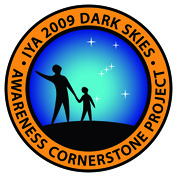Dark Skies Awareness: seeing in the dark

The arc of the Milky Way seen from a truly dark site is part of our planet's cultural and natural heritage. It is now more urgent than ever to preserve and protect dark night skies in places such as urban cultural landscapes, national parks and sites connected with astronomical observations, as well as to support the goals of UNESCO's thematic initiative, Astronomy and World Heritage, to preserve sites of astronomical importance for posterity. The ongoing loss of a dark night sky for much of the world's population is a serious and growing issue that not only impacts astronomical research, but also human health, ecology, safety, security, economics and energy conservation. According to the United Nations, around 3.3 billion people, over half of the world's population, live in cities. With the growth of large cities, the number of people living in cities could climb to 5 billion by 2030. As cities grow, so does their impact on the global environment.
For this Cornerstone project the IAU and UNESCO collaborate with the US National Optical Astronomy Observatory, representatives of the International Dark-Sky Association, the Starlight Initiative and other national and international partners in dark-sky and environmental education on several related themes. The focus is on three main citizen-scientist programmes that measure local levels of light pollution. These programmes take the form of "star hunts" or "star counts", providing people with a fun and direct way of acquiring heightened awareness of light pollution through firsthand observations of the night sky. The three programmes cover the entire IYA2009, namely GLOBE at Night (in March), the Great World Wide Star Count (in October) and How Many Stars (January, February, April through September, November and December). During IYA2009, GLOBE at Night set a new record, with 80% more observations of the world's dark skies than the programme's previous best.
UN Millenium Development Goals![]()
![]()
![]()
|
Project Website |
|
Task Group
Advisors
|




